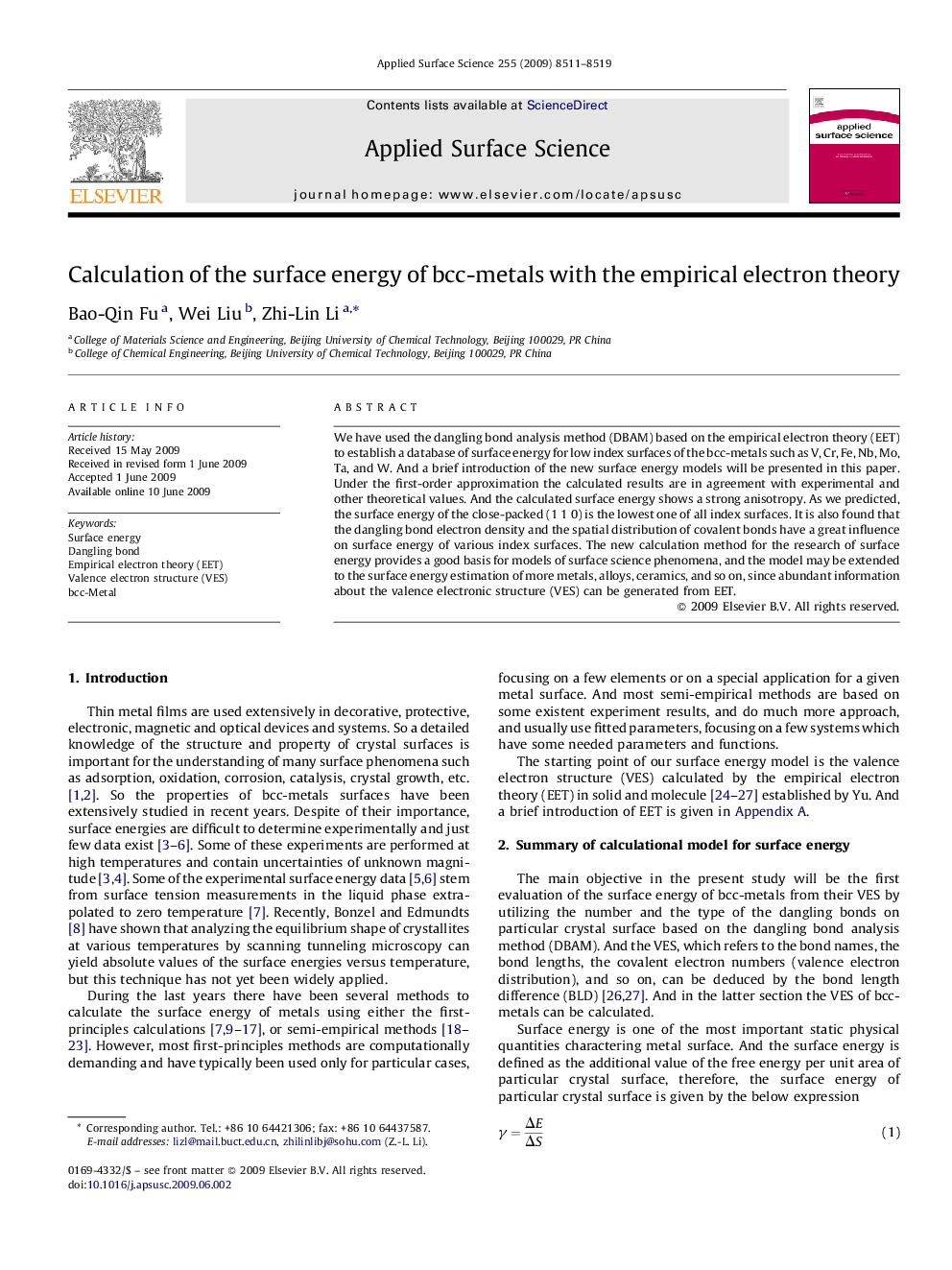| Article ID | Journal | Published Year | Pages | File Type |
|---|---|---|---|---|
| 5362030 | Applied Surface Science | 2009 | 9 Pages |
We have used the dangling bond analysis method (DBAM) based on the empirical electron theory (EET) to establish a database of surface energy for low index surfaces of the bcc-metals such as V, Cr, Fe, Nb, Mo, Ta, and W. And a brief introduction of the new surface energy models will be presented in this paper. Under the first-order approximation the calculated results are in agreement with experimental and other theoretical values. And the calculated surface energy shows a strong anisotropy. As we predicted, the surface energy of the close-packed (1Â 1Â 0) is the lowest one of all index surfaces. It is also found that the dangling bond electron density and the spatial distribution of covalent bonds have a great influence on surface energy of various index surfaces. The new calculation method for the research of surface energy provides a good basis for models of surface science phenomena, and the model may be extended to the surface energy estimation of more metals, alloys, ceramics, and so on, since abundant information about the valence electronic structure (VES) can be generated from EET.
